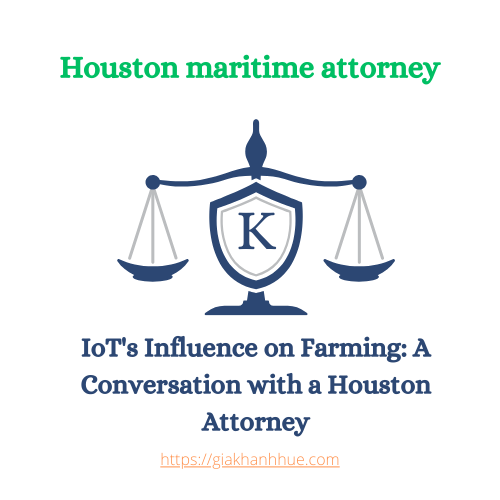In the heart of Houston’s bustling legal district, we sat down with a seasoned attorney who has a unique perspective on how the Internet of Things (IoT) is revolutionizing the agricultural industry. This conversation sheds light on the legal intricacies and transformative potential of IoT in farming.
The Dawn of a New Era in Agriculture
The attorney began by highlighting how IoT is not just a technological trend but a pivotal force in modern agriculture. “Farmers are now using IoT devices to monitor crop health, soil conditions, and weather patterns in real-time,” he explained. This data-driven approach is not just enhancing crop yields but also enabling a sustainable future for farming.
Legal Implications and Advancements
With the adoption of IoT in farming, legal considerations come to the forefront. Our expert discussed the importance of understanding the regulatory landscape, including data privacy, ownership, and usage rights. “As attorneys, we’re navigating uncharted waters. We need to ensure that as these technologies advance, the rights of farmers and consumers are protected,” he emphasized.
IoT’s Impact on Farm Efficiency and Productivity
The conversation then turned to the tangible benefits of IoT in agriculture. The attorney shared success stories from local farms, where IoT has led to improved resource management and reduced environmental impact. “It’s about optimizing the entire farming process, from planting to harvest. IoT is enabling farmers to make informed decisions that directly affect their efficiency and productivity,” he stated.
The Road Ahead
Looking to the future, the attorney was optimistic about IoT’s role in farming. He envisioned a world where technology and law work hand in hand to foster innovation while protecting stakeholders. “The potential is immense. With continued collaboration between technologists, farmers, and legal professionals, IoT can lead to unprecedented advancements in agriculture,” he concluded.
Navigating Challenges and Embracing Opportunities
However, the journey is not without its challenges. The attorney pointed out issues like the digital divide and the need for technological literacy in rural areas. “To fully benefit from IoT, we must ensure that farmers, regardless of their size or location, have access to the necessary technology and training,” he remarked. Bridging this gap is essential for the equitable growth of the agricultural sector.
The Role of Legal Guidance in IoT Adoption
The attorney also stressed the importance of legal guidance in the adoption of IoT in farming. “With new technology comes new risks and uncertainties. It’s crucial for farmers to understand their rights and for policymakers to create a supportive legal framework,” he advised. From issues like data breaches to intellectual property, legal professionals are at the forefront of addressing these concerns and facilitating a smooth transition into this new era of farming.
Collaboration for a Sustainable Future
The conversation concluded with a call to action for greater collaboration between technologists, legal experts, farmers, and policymakers. “IoT in agriculture isn’t just about technology; it’s about creating a sustainable and prosperous future for all. By working together, we can harness the full potential of IoT while ensuring ethical and legal standards are met,” the attorney affirmed.

